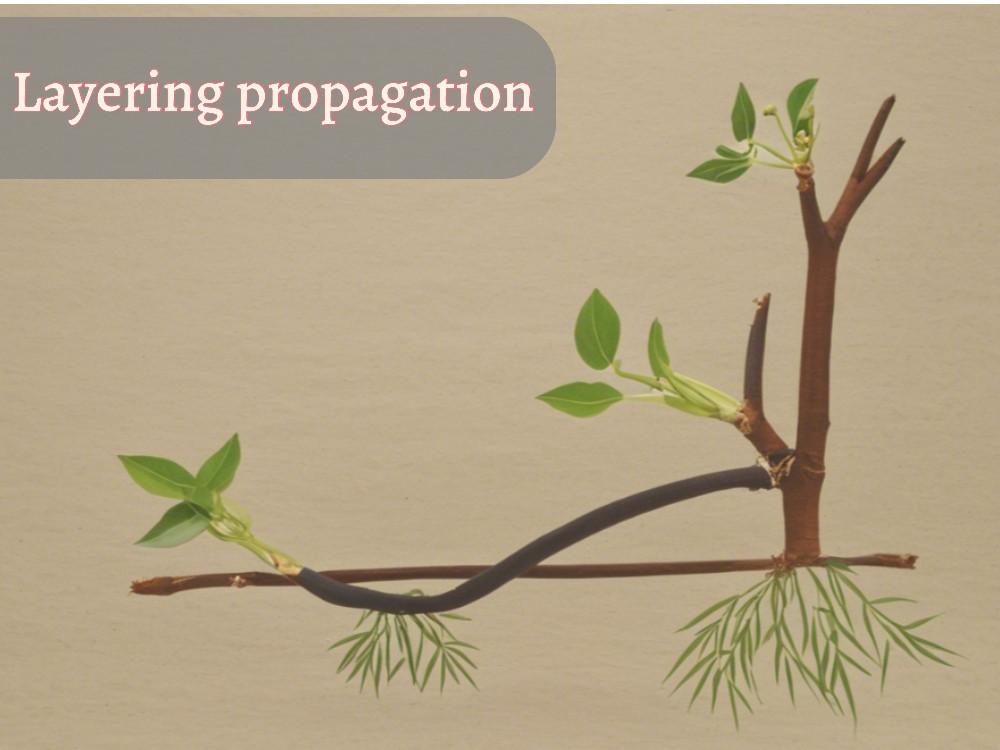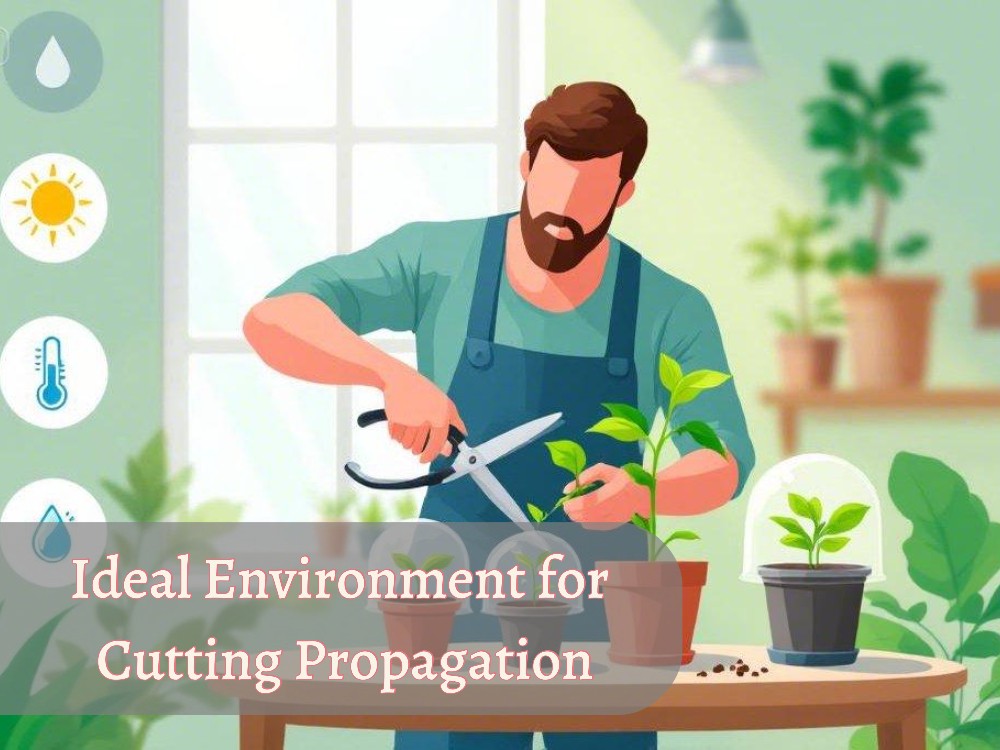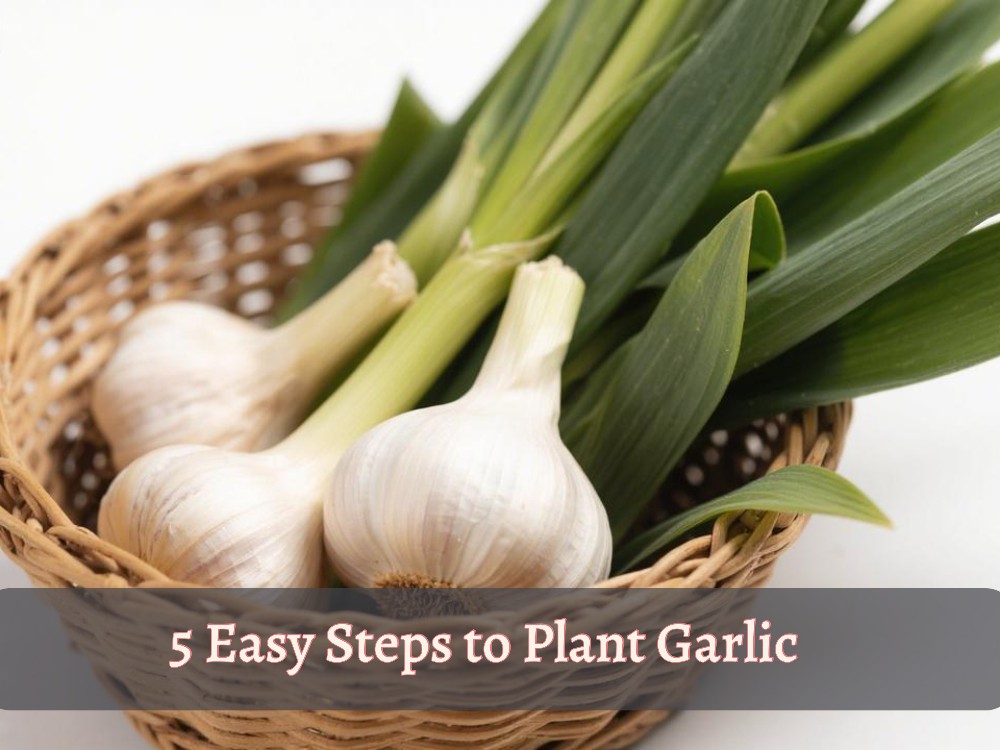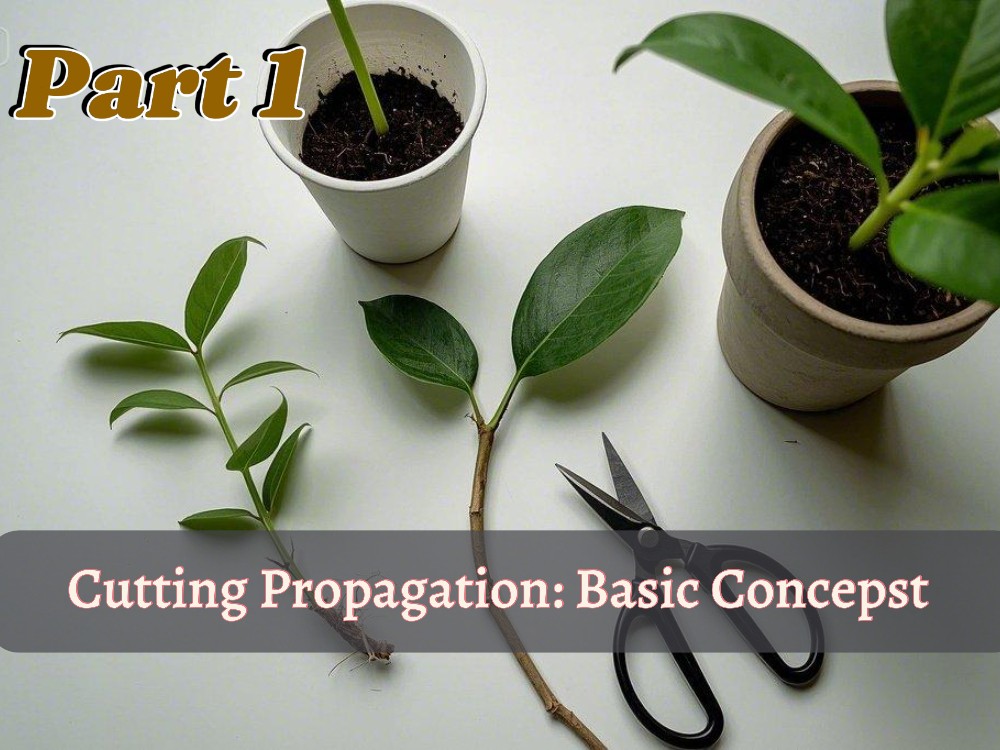There are millions or trillions of plants in the world. Each day, about 2000 plants are discovered and described. I have noticed there should be a basic concept for gardeners to understand which plant is suited for which propagation.
Today, I will describe some hints for checking the plant’s ability to suit cutting propagation. Cutting propagation involves using any non-reproductive part of a plant to produce a new plant by cutting it and keeping it in ideal conditions. Here’s the first part of our series, Cutting Propagation! Also, explore cutting types in part 2.
How I Check, My Chosen Plant is Suited for Cutting Propagation
In this modern era, you can easily search online for “Can my plant be propagated by cutting propagation?” However, understand the general concept that we will describe in this content.
Indeed, some plants are considered best suited for cutting propagation based on worldly popularity, as everyone knows cuttings of lavender, money, and rosemary plants are successful. But it is also a fact if there is any new or uncommon plant, gardeners need to do a self-experiment to see if it can grow from cutting or not.
Many traditional gardeners always use two methods to decide the suitability of any plant for cutting propagation. I have also tried their techniques and have had success! You can try both methods;
Scientific Method: A Structured Approach and Guidelines

This method depends on research, scientific principles, and pre-existing information. Professional gardeners check plant biology, propagation methods, and scientific references. They consider the following factors;
1-Analyzing the Basic Nature of Plant
Each plant has its own genetic and physical properties that determine whether it is suitable for cutting propagation or not. We must see plant nature, whether it grows from direct seed or vegetative propagation.
Detail:
Some plants naturally thrive through cutting propagation, such as herbaceous, shrubs, and fast-growing plants, having enough ability to make roots inside: for example, Rosmarinus officinalis, citrus spp, begonia spp, and rosa spp.
Note: Since there are more types of cutting propagation, such as stem cutting, leaf cutting, root cutting, and sub-types of these types, other factors are also considered for the suitability of plants for cutting propagation.
Certain woody, hard-leaf, and mature plants are not suited for cutting propagation due to their rigid structure, dry stems, and low hormonal activity in their genetic traits.
The first step in the scientific approach includes analyzing growth hormonal activity and other genetic factors, which we are going to understand below.
These can be part of these steps or separately, helping us to deeply understand the suitability of plants for cutting propagation.
2-Testing Harmony Activity in the plant
Actually, we cannot do this analysis ourselves, but scientists determine plants’ hormonal activity through various scientific experiments. When we cut a vegetative part of the plant (stem, leaf, or root), hormones inside the plant continue the process of root formation.
What are Plant Hormones and Hormonal Activity? Plant hormones are the chemical compounds that control plant development, growth, and other biological functions. Hormonal activity refers to the process of these growth hormones in a plant. Hormones like Auxin and Abscisic Acid (ABA) play a big role in the root formation of plants.
So, the presence of essential growth hormones (for root formation) mainly decides the plant’s potential for cutting-based propagation. Scientists perform this analysis when the plant’s vegetative parts (stem, leaf, and root) are active and showing growth, as this is the time when hormones, especially auxins, which are necessary for root formation after cutting, are most active.
3-Determining other factors of Genetic traits in plants
Beyond hormonal activity, other genetic factors like vegetative growth, rooting ability, plant growth stage, and seasonal effect are also key determinants in deciding a plant’s ability for cutting propagation.
- Plant vegetative growth: Vegetative growth always increases the production of new vegetative plant parts (stem, leaf, and cutting). The cutting process becomes more successful if these parts are healthy and strong.
- Plant rooting ability: Genetically, each plant has different rooting capabilities in its vegetative parts. Plants with sufficient rooting capacity inside and other complementary factors are suited for cutting propagation.
- Plant Age or growth stage: This factor is also important as some plants are propagated in the young stage while some require more time for maturity and fast hormonal activity. Types of stem cutting have also been created based on the growth stage.
- Seasonal effect and environmental conditions: Some plants have genetic structures that allow thmaterem to propagate in a specific season or environmental conditions. If your chosen plant has enough ability to tolerate seasonal variations in its genetic makeup, it is well-suited for propagation in that specific season.
Hereditarily, So all these factors come together to decide whether a plant is suited not only for cutting propagation but also for other propagation like layering, division, grafting, etc.
Traditional and Practical Approach to Check Plant Ability for Cutting Propagation

It is the method, I have used myself and also used by traditional gardeners, farmers, and gardening enthusiasts, especially those who have been gardening for generations.
Some of these people learned through experiences and observation.
For example; when a gardener sees that their plant makes roots from its stems naturally, he/she will agree it is suitable for cutting propagation. On the other hand, if a plant is never grown from cuttings, they will accept “It will not work” without any scientific explanation. And sometimes, gardeners consider that plant already popular for cutting propagation, so they can easily understand!
This technique is based on experiments and proceeds mostly through oral knowledge from one person to another or for generations. However, modern scientific research has made it more effective, provides new evidence, and proves more plants and methods for cutting propagation.
As we are talking about cutting propagation, you know it has more types, such as stem, leaf, and root cutting. Here, we will mention all the steps for all these 3 cutting types so we can easily understand the plant ability for each cutting type.
Before moving forward, check out plant propagation materials list!
Check plant ability for Stem Cutting Step-by-Step🌿
Step 1: Press the stem with your fingers: Is it soft or hard?
Take a small branch (stem) of a plant and press it with a finger to check;
- If the stem is soft and green, it may be best for cutting because this type of stem makes roots easily.
- When a stem feels hard, dry, and woody, it cannot be suitable for cutting because dry and woody stems with hardness take too much time, and sometimes, cutting does not succeed.
Step 2: Bend the stem slightly. Does it bend or break easily?
Now turn the same stem slightly and look;
- If the stem is bent easily but does not break, it can be a positive hint for cutting. A healthy and suitable stem has flexibility inside, helping in root formation after cutting.
- If the stem breaks easily or feels too hard, it is not fine for cutting propagation. Because these stem types usually can not absorb water for long and may wilt after cutting.
Step 3: Look at the stem from the inside: Is it green or brown?
Make a small cut on the stem with a knife and observe carefully;
- If the stem is green inside, it may have enough hormones and humidity for root formation, making it ideal for cutting propagation.
- Brown roots with dryness inside can not root properly and often wilt soon after being cut.
Step 4: Test the water – does the steam absorb water or not?
Now, place the lower part (where roots formed) of the cut stem in the water (in glass) and observe the process;
- If the stem still looks fresh after 30 minutes, it is relevant for cutting because a stem that survives in water can form roots in the soil.
- When the stem starts to wilt and become soft, it is not appropriate for cutting propagation, as stems that wilt in water can not succeed in cutting.
Step 5: Leave the stem open overnight – does a callus form on it?
Keep the stem at any dry place for a night and observe in the morning;
- If a light white layer (callus) forms on the cut part of the stem, it is a good sign that the stem is getting ready to grow new roots.
- Stem that becomes soft and begins to rot or completely dries out, new roots will not grow from it.
Check plant ability for Leaf Cutting Step-by-Step 🍃
Step 1: Is the Leaf soft or hard?
Carefully touch the leaves;
- Soft and dark green leaves contain moisture and energy, making them more likely to root quickly.
- If the leaves feel dry or hard, they may be weak for cuttings as they often wilt after cutting and fail to produce new roots.
Step 2: Does the leaf look healthy or not?
Check the leaves thoroughly from both sides.
- Leaves free from blemishes, holes, or defects on the leaves may be ready for healthy cuttings.
- Damaged leaves can effectively become infected during cutting and will not be able to form new roots.
Apart from this, it is essential to consider other factors as well.
Step 3: Check the leaf’s water absorption capacity – is it fresh?
Now give the leaf a little water and see
- Check that the leaf absorbs water quickly and remains fresh; it is helpful for root formation.
- If the leaf fails to absorb water, it should be cut off immediately because a wilted and dry leaf may fail to produce roots and will be cut off quickly.
Step 4: Check the edges of the leaf – are they smooth and complete?
Look carefully at the edges of the leaves.
- Smooth and perfectly complete edges of leaves are likely to be well-prepared for cutting, as healthy and smooth edges indicate strong leaves that help to grow the roots.
- Injured or torn edges can cause injury during cutting, resulting in the leaves wilting quickly.
Step 5: Check the weight of the address – is it light or heavy?
Now, take that leaf in your hand and look at it.
- If the leaf feels moderately heavy and a little heavy, it may be good for cutting propagation. If it is a little heavy, it will be easier to root.
- On the other hand, light leaf dries out quickly and may have less ability to root.
Step 6: Check the back of the leaf – is there a callus forming there?
Cut a little off the back of the leaf and let it dry;
- Callus formation on the leaf is a good sign that the leaf is getting ready to be removed without being picked.
- When a callus does not form; and the leaf starts to dry, it is not favorable for cutting.
Check plant ability for Root Cutting Step-by-Step 🌱
Step 1: Is the root soft or hard?
Check roots by hand;
- Medium-hardness roots that are not too soft and not too hard have the highest chance of success, as they are healthy and ready to grow.
- Soft and wet, or hard and woody, appears as a negative sign. Because very soft roots are prone to rotting, while hard roots have a low ability to form new cells.
Step 2: Check the Root’s color
Clean the roots and observe their color;
- Light brown and white inside roots are alive and have new cells growing rapidly, making them acceptable for cutting propagation.
- While black and rotten roots are dead and may lose their ability to absorb water, causing cuttings to fail.
Step 3: Check the thickness of the root
Touch and feel the roots with your fingers;
- Medium-thick roots about the diameter of a pencil have the best ability to form roots.
- Very thick roots can usually be old and weak, while very thin roots cannot retain moisture for long and dry out quickly.
Step 4: Check the root surface – does it have nodes (small bumps)?
Check the root surface considerably;
- Roots with nodes and small bumps can grow new roots faster because these are the places where the plant itself produces new roots.
- Completely smooth and straight roots can take longer to form new cells, creating difficulties in cutting propagation.
Step 5: Check the root’s water absorption ability
Cut a small section of the root and put it in water and see:
- Water-absorbing roots can produce new cells more quickly, which is essential in the cutting process.
- Dry and hard roots do not absorb water well, which reduces the chances of them forming roots after cuttings.
Step 6: Cut the root and see – does the callus form?
Cut the roots and place them in water for a few hours;
- Forming a callus (white layer) on the edge of the root within a few hours of cutting is a sign that the root is healthy and may be ready to put out new roots.
- If the callus does not form and the root starts to rot, it may be damaged during cutting and will not be successful.
Let’s Close it: Is your plant ready for cutting?
If you have really followed this guide, then you must have the best estimation of whether is your plant suited for cutting propagation or not. Whether you are trying stem-cutting, leaf-cutting, or root-cutting, just remember one thing; every plant is not the same!
If you doubt any plant or you want to try cutting propagation to know whether is my plant suited for it or not.
Take one or two cuttings (stem, leaf, or root) as I have described above, keep them in an ideal environment, and see are they make new roots.
If your cuttings are not successful, don’t be sad! It can be that the plant is not suited or you failed to provide the ideal environment. Just understand the reason!
Now it’s your turn
Have you tried cutting propagation on different plants? If yes, please share your experience with us to make a green thumb network!
Thanks a lot, if you have any more questions, ask me without any hesitation.






